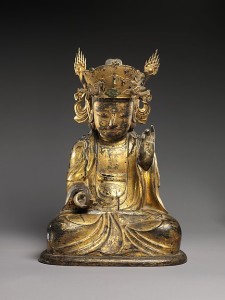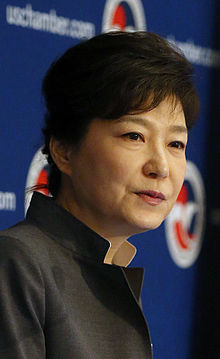 Like many good articles, the one I wrote on Korea’s investment in having its visual arts seen in this country for The New York Times‘s recent Museums section began years ago with a conversation. It wasn’t a pitch. I was visiting the Museum of Fine Arts in Houston, and then-director Peter Marzio–who died in 2010–was walking me around the museum. He stopped at the museum’s Korean arts gallery and said that the Korea Foundation had provided the money for it and, if memory serves, Korean museums had lent objects to be displayed there.
Like many good articles, the one I wrote on Korea’s investment in having its visual arts seen in this country for The New York Times‘s recent Museums section began years ago with a conversation. It wasn’t a pitch. I was visiting the Museum of Fine Arts in Houston, and then-director Peter Marzio–who died in 2010–was walking me around the museum. He stopped at the museum’s Korean arts gallery and said that the Korea Foundation had provided the money for it and, if memory serves, Korean museums had lent objects to be displayed there.
I had not, at that time, heard of the Korea Foundation, but I was impressed. And I have since watched as museum after museum has created or improved Korea art galleries with its support; individual press releases fell on fertile ground with me.
In my article–headlined All That Korean Art Is There for a Reason–I focused on U.S. museums, but the KF has provided support to museums in many countries, as you can see on this map. The support went to museums that were recommended by Korean embassies, cultural centers to other third parties, those that applied directly to the Korea Foundation, and those the Korea Foundation directly approached, based on its own surveys or advisers. (At right, A Joseon Dynast figure from the Met’s collection.)
And other Korean entities are active abroad too. The Philadelphia Museum of Art pointed out support from the The National Research Institute of Cultural Heritage, which Korean officials told me primarily funded conservation projects and conducted surveys/studies of Korean art collections outside of Korea. In 2012, a new organization, the Overseas Korean Cultural Heritage Foundation. took over those duties.
Yoon Keum-jin, the executive vice president in the Korea Foundation’s Washington office, also responded to my questions about coordinated support:
On numerous occasions, the KF has joined hands with leading museums in Korea, such as the National Museum of Korea, National Folk Museum of Korea, National Museum of Modern and Contemporary Art, Korea, to promote cooperative projects. In particular, whenever a U.S. museum plans to organize a large-scale exhibition, the KF and national museums work closely together to supply notable artworks, including originals in certain cases.
In addition, the KF has also collaborated with foundations and corporate enterprises in Korea which have expressed an interest in making various contributions to selected museums, for a variety of purposes.
When the Korean Gallery was established at the Metropolitan Museum of Art Samsung and the Foundation collaborated. Samsung made an endowment for Korean art while the Foundation supported the construction costs.
 Although Dr. Yoon said that “At this time, no new Korean art gallery projects are being developed with the support of the Korea Foundation,” there is an application online for other kinds of support–exhibitions, visiting curators, etc.
Although Dr. Yoon said that “At this time, no new Korean art gallery projects are being developed with the support of the Korea Foundation,” there is an application online for other kinds of support–exhibitions, visiting curators, etc.
This is very impressive to me. The fact that it extends into contemporary art makes it all the more so. And that it extends to the highest levels of government. Director Seung Je Oh of the Korean Cultural Center New York wrote this to me in an email:
President Park [Geun-hye] (at left) has stressed cultural enrichment as the 4 key policy priorities during the duration of her term. Her recent visit to the Korean Cultural Center last September of 2015 further serves to stress this point. The Korean government has announced its aims to establish culture as a key diplomatic platform, and since 2013 has even created the Presidential Committee on Cultural Enrichment. By various governmental arms, Korea’s continued expansion in support for Korean arts worldwide is a reflection of its direction to contribute to the global economy in creative ways, taking advantage of our human capital as cultural assets and supporting international exchange.
The cultural and creative industries are labor intensive, and their development at times not easily observable or measurable. Nevertheless, I believe that that these areas play critical roles in propelling in economic development in a way that impacts the public in meaningful and beneficial ways.
